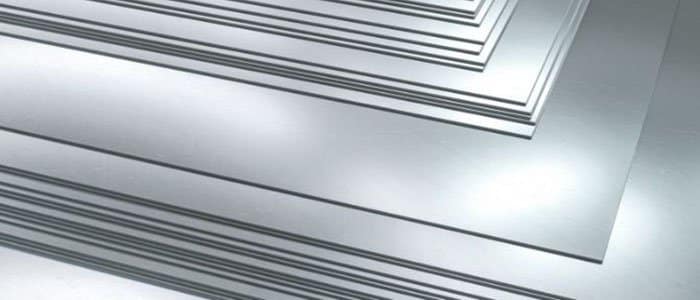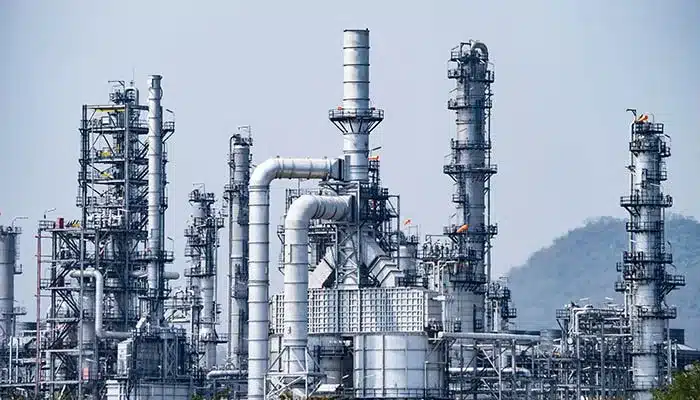Choosing the right high-performance alloy is crucial for demanding industrial environments. Grade 5 titanium (Ti-6Al-4V) and Hastelloy C-276 are both designed for extreme conditions, but their performance differs significantly. This blog will provide a detailed comparison of grade 5 titanium and Hastelloy C-276 to help you make the right metal choice.
Main Introduction
- Grade 5 Titanium (Ti-6Al-4V):The undisputed workhorse of the titanium alloy family. This alpha-beta alloy, containing 6% aluminum and 4% vanadium, is renowned for its outstanding strength-to-weight ratio, excellent corrosion resistance (especially in oxidizing environments), and good biocompatibility. It’s the go-to material for aerospace, medical implants, high-performance automotive, and marine components where weight savings are paramount.
- Hastelloy C-276:A nickel-molybdenum-chromium superalloy engineered for one primary purpose: conquering the most severely corrosive environments Its exceptional resistance to a wide array of acids, chlorides, and pitting/crevice corrosion makes it a staple in chemical processing, pollution control, flue gas desulfurization (FGD), and oil & gas applications dealing with sour gas.
Key Properties Comparison
| Property | Grade 5 Titanium (Ti-6Al-4V) | Hastelloy C-276 |
| Density (g/cm³) | 4.43 | 8.89 |
| Tensile Strength (MPa) | 950–1,050 | 690–830 |
| Yield Strength (MPa) | 880–950 | 310–415 |
| Elongation (%) | 10–15 | 40–50 |
| Hardness (HB) | 320–350 | 190–230 |
| Max Operating Temp (°C) | 400 | 1,100 |
| Thermal Conductivity (W/m·K) | 6.7 | 9.8 |
| Corrosion Rate (mm/year) in Seawater | <0.01 | <0.01 |
Corrosion Resistance Performance
Both alloys offer exceptional corrosion resistance, but their strengths differ:
- Grade 5 Titanium:
- Immune to chlorides, seawater, and oxidizing acids (e.g., nitric acid).
- Superior in reducing environments (e.g., chlorides, sulfides).
- Passive oxide layer provides self-healing protection.
- Hastelloy C-276:
- Outstanding resistance to localized corrosion (pitting/crevice).
- Withstands harsh acids: HCl (up to 10% concentration), H₂SO₄ (up to 40%), and wet chlorine.
- PREN (Pitting Resistance Equivalent Number): ≥69 (vs. Grade 5 Titanium’s ~35).
Mechanical Behavior Under Stress
- Fatigue Strength:
- Grade 5 Titanium: 510 MPa at 10⁷ cycles (superior for cyclic loading).
- Hastelloy C-276: 310 MPa at 10⁷ cycles.
- Creep Resistance:
- Hastelloy C-276 maintains strength above 600°C (e.g., 100-hour rupture strength: 150 MPa at 870°C).
- Grade 5 Titanium loses significant strength above 400°C.
Application-Specific Recommendations
Choose Grade 5 Titanium When:
- Aerospace:Its unparalleled strength-to-weight ratio makes it indispensable for airframes, landing gear, jet engine components (fan blades, discs), and fasteners. Every gram saved translates directly to fuel efficiency and payload capacity.
- Medical Implants:Biocompatibility, corrosion resistance in body fluids, and modulus of elasticity closer to bone than stainless steel make it ideal for orthopedic implants (hips, knees, spinal fusion), dental implants, and surgical instruments.
- High-Performance Automotive/Marine:Used in connecting rods, valves, suspension springs, exhaust systems, and propeller shafts where reducing weight improves performance, handling, and fuel economy. Resists seawater corrosion effectively.
- Consumer Goods:High-end bicycles, golf clubs, and watch cases leverage its strength, lightness, and corrosion resistance for premium products.
Choose Hastelloy C-276 When:
- Chemical Processing:The gold standard for equipment handling aggressive chemicals like hydrochloric acid (HCl), sulfuric acid (H2SO4), phosphoric acid, acetic acid, and chlorine solutions. Reactors, columns, piping, and tanks rely on its immunity.
- Pollution Control (FGD Systems):Withstands the highly corrosive, hot, wet, and acidic conditions found in flue gas desulfurization scrubbers in power plants.
- Oil & Gas (Sour Service):Essential for components exposed to hydrogen sulfide (H2S), chlorides, and high pressures/temperatures in downhole tools, valves, piping, and manifolds (compliant with NACE MR0175/ISO 15156).
- Pulp & Paper:Resists corrosion from bleaching chemicals (chlorine dioxide, hypochlorite) and digesters.
- Pharmaceutical & Food:Used in critical components where contamination from corrosion products is unacceptable, especially involving cleaning agents or acidic processes.
Conclusion
- Choose Grade 5 Titaniumwhen your priorities are maximizing strength while minimizing weight, operating in oxidizing or moderately corrosive environments (like seawater), and working within moderate temperature limits. It’s the material of choice for aerospace, medical implants, and high-performance lightweight structures.
- Choose Hastelloy C-276when your application demands absolute supremacy in corrosion resistance, especially against aggressive reducing acids, chlorides, and pitting/crevice corrosion at elevated temperatures. It’s the indispensable solution for the harshest chemical processing, pollution control, and sour oil & gas environments.
Ready to source the perfect high-performance alloy for your demanding application? Explore our extensive inventory of Grade 5 Titanium and Hastelloy C-276 products, including plate, sheet, bar, pipe, and fittings. Contact our metallurgical experts today for a personalized consultation and competitive quote tailored to your specific needs.




